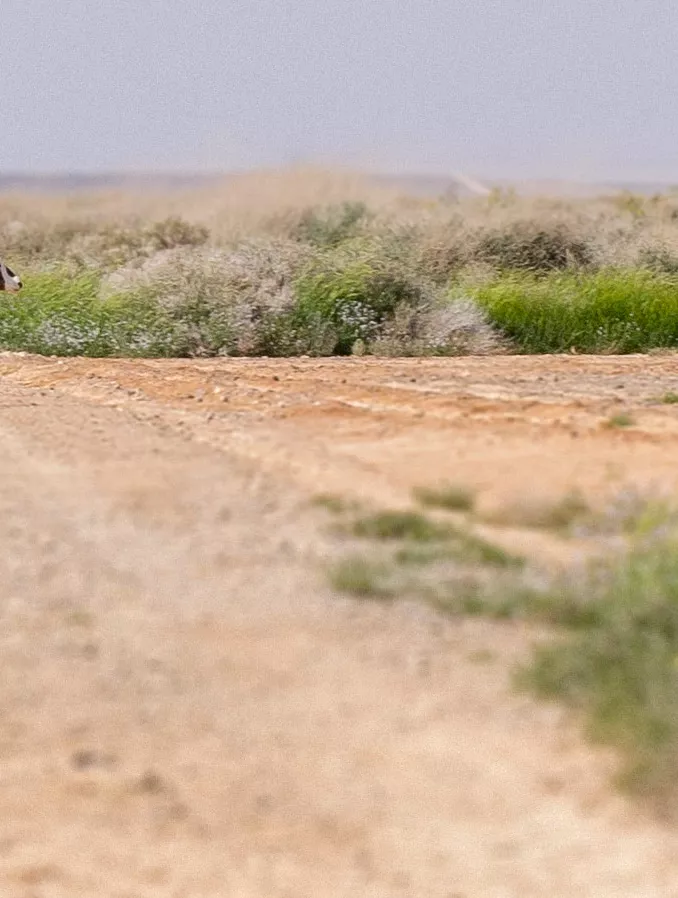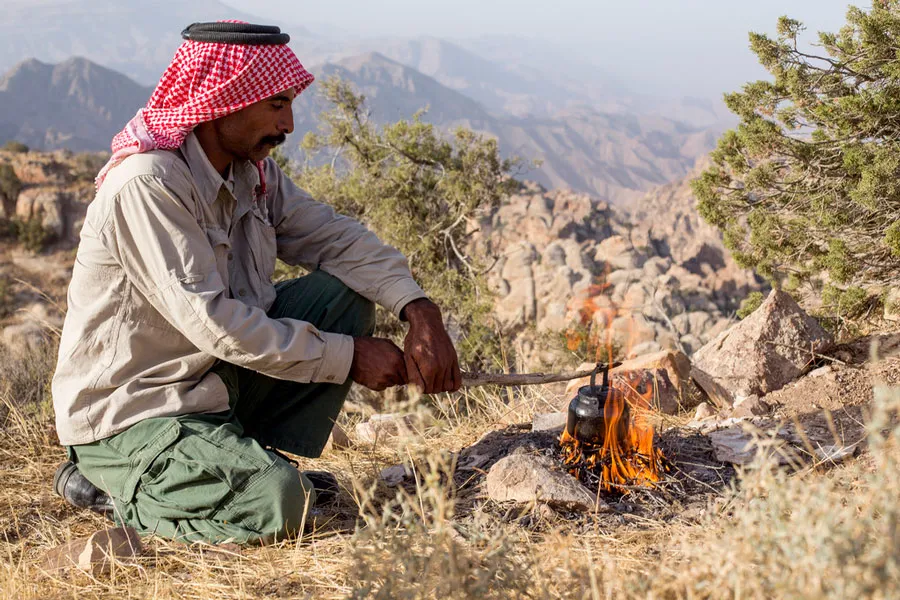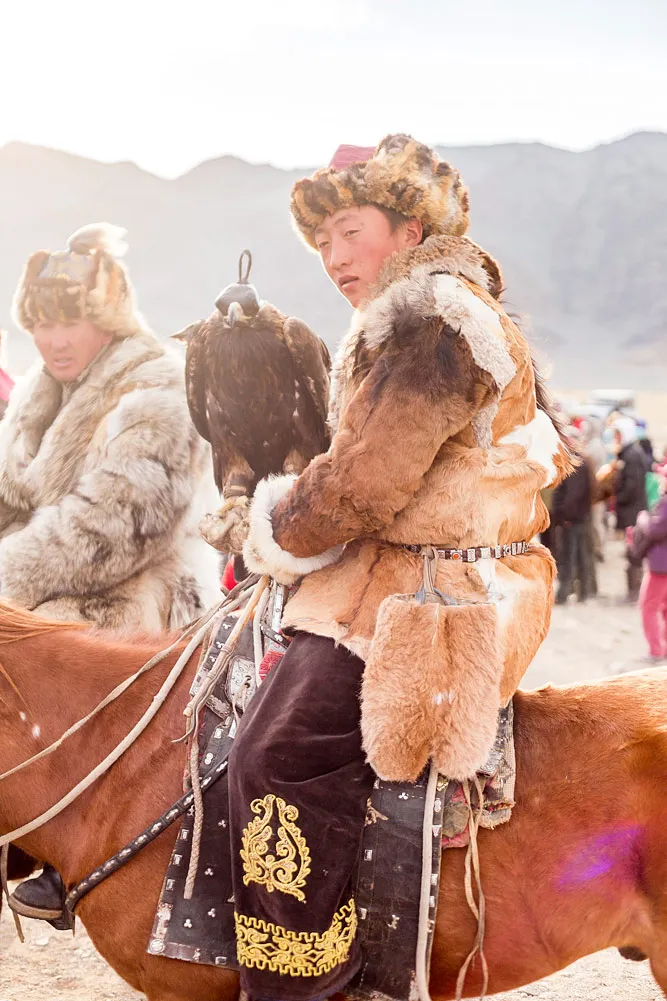
What do former Vice President Dick Cheney, the fictional Lady Mary of television’s Downton Abbey, and the emperors of the Umayyad Dynasty all have in common? Well, according to History of Art Ph.D. candidate Alex Brey, these wealthy and powerful individuals all relied on the spectacle of the hunt to convey their status and political might. For Lady Mary, it was the decision to sit astride her horse during a festive hunt at Downton that signaled to her peers in the aristocracy that she did not plan to conform to the restrictive gender roles set for women of her standing (she would go on to become the agent of the estate). For Cheney, who infamously shot a fellow hunter during an outing on a privately-owned ranch in Texas in 2006, it was largely his ability to avoid media attention that served to convey his great privilege—he was above public scrutiny.
For the new kings of the Umayyad Caliphate in the second half of the 7th century, the hunt was an important symbolic event that allowed them to legitimize their rule according to conventions established by their predecessors. As Alex explains: “I’m looking at this period when the first 3 or 4 generations of Caliphs are trying to figure out what Islamic kingship will look like. They’re drawing on these earlier Byzantine and Persian models of kingship which have their own related but distinct traditions of royal hunts. I think they were deliberately employing hunting spectacles to position themselves as the heirs to these kingdoms and to assert their legitimacy within this community of emperors.”
As the recipient of two consecutive research fellowships, Alex was able to spend the second half of 2014 and all of 2015 traveling throughout the Mediterranean, Western Europe, and Central Asia in pursuit of visual and textual evidence that would help him shed light on the use and adaptation of hunting rituals in the expanding Islamic empire in the late 7th and early 8th centuries. He spent the first six months at the American Center for Oriental Research in Amman, Jordan, a base from which he visited several archaeological sites and museums with excavated materials featuring hunting scenes. He also benefitted from the Center’s active scholarly community, and was able to bounce around ideas with them.
While in Jordan, Alex also made another important and surprising discovery. He visited one of the nature reserves that the royal family of Jordan has begun to establish throughout the country, which allowed him to think about his dissertation from a different perspective. At the Shaumari Wildlife Reserve he got a glimpse of what the local landscape might have looked like several centuries ago. “The reserve is fenced off and protected from grazing, which means that you get to see the ecosystem as it would have existed in the middle ages, because the amount of pastoralism dramatically increased in the 19th and 20th centuries and it totally devastated the landscape of this area. You don’t realize this, because it has all been equally devastated—it looks like desert. These preserves look very different; they are very green with very tall grasses (6 or 7 feet). It’s actually quite lush.” And the nature reserve also allowed him to glimpse some of the animals featured in the hunting scenes he is researching, like wild donkeys, ibexes, and oryxes (like the one seen above).
From Jordan, Alex moved on to a three month stay in Jerusalem and then traveled throughout Central Asia and Russia thanks to a grant from the Social Science Research Council (SSRC). This afforded him many opportunities to visit archaeological sites and fresco scenes in Uzbekistan and Tajikistan, areas that would have been on the frontier of the Umayyad Empire in the early 8th century. At the edges of the expanding empire, these murals evidence a complex mix of regional motifs and the influence of the new rulers. “Most of these murals date to a decade or two after the Muslim conquest of these cities, thus the hunting scenes represent continuity within the local tradition. What I’m trying to figure out is how that continuity would have been influenced by the recent conquest. Earlier hunting scenes have a more symbolic, quasi-religious connotation. After the conquest, we find more straight-forward, elite hunting scenes.”
Since the SSRC grant encourages students to approach their research topics in ways that go beyond the conventional methods of one’s discipline, Alex tried to think beyond the archaeological site in planning his itinerary. This led him to one of the most profitable experiences of his time abroad, a visit to the annual Golden Eagle Hunting Festival in rural western Mongolia. The event features pastoral hunters from the region who still practice a traditional form of falconry featuring golden eagles and allowed Alex a glimpse into how hunting may have looked in the 8th century.
Because of the rarity of the event, it has gained much notoriety among international photographers. Alex reports that there were close to 200 photojournalists there—four times the number of hunters participating in the festival. There was also another scholar at the event, a fellow PhD student and falconer from Kansas, who helped explain some of the intricacies of the hunting process. However, according to Alex, the greater import of this experience came from realizing that, on a certain level, the events required no translation. “When it comes down to it,” he muses, “it’s like going to a rodeo—the events themselves are self-explanatory. The falconers must demonstrate the different skills that their eagles have, how well they respond to calls, their riding skills, etc.”
In terms of his dissertation research, this realization had a more profound impact. “It helped me think about the cross-cultural legibility of hunting spectacles, because the hunting scenes that I’m working on are part of a larger visual culture of hunting in the 8th century that also involved spectacular royal hunts. Visiting the Golden Eagle Hunting Festival helped me understand how legible, and impressive, most of that event would have been even to people in the newly conquered territories who otherwise may not have been familiar with some of the events and rituals.”
Taken together, these experiences have convinced Alex that the great variety of hunting scenes from the Umayyad Empire have much more to say than previously thought. According to Alex, “scholars have primarily focused on how elements of Persian and Byzantine imperial iconography influenced depictions of enthroned Umayyad rulers in early official Islamic palaces. The hunting scenes have been dismissed for being derivative.” But because hunting scenes were so common, and so many survive, they allow us to more easily see how artists were reusing and adapting prototypes that were beginning to circulate in the new empire and allow for a more dynamic comparative study. “The fact that these scenes in the provinces are derivative of prototypes that are two hours away means you have a mapping of the empire through the use of a single prototype in a single architectural space.”
Alex will continue his exploration of hunting scenes and the political and artistic circumstances of their creation as a recipient of the Garden and Landscape Studies Junior Residential Fellowship at Dumbarton Oaks in Washington, D.C. during the 2016-17 academic year.

